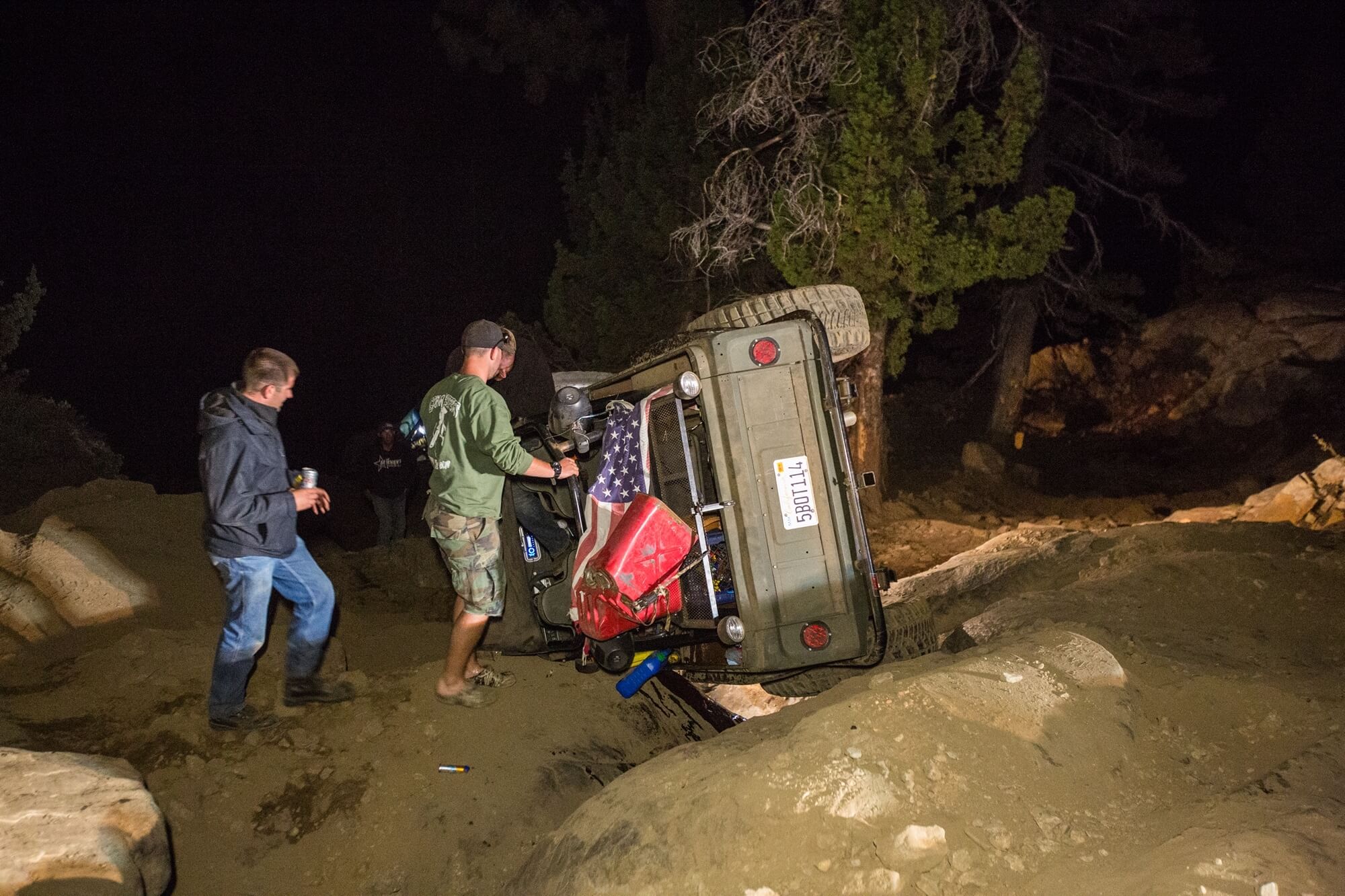
Photography by Harry Wagner
We all have seen “that guy” on the trail. You know, the one who brings a vehicle on a run that he knows doesn’t run right, or tosses empty beer cans into the sagebrush. Public lands don’t belong to “that guy”, they collectively belong to all of us. As a result, it is in our best interest to ensure the areas we love to recreate are just as pristine the next time we visit as they were the last time and do not get shut down. Sometimes “that guy” is a lost cause, but more often than not he just doesn’t know any better. Keep reading for some tips on how to be a courteous user of the outdoors and avoid being “that guy.”

You want to ensure that your vehicle is free from leaks prior to going wheeling. This is particularly important if you plan to cross water at all, where the fluids from your 4×4 could potentially find their way into drinking water or habitat for fish. On this crossing of Fordyce Creek, Cal4Wheel inspects and wipes down every vehicle during Sierra Trek.
Vehicle Maintenance
It is important that your vehicle is mechanically sound before you hit the trail. That not only means that your 4×4 is free of leaks, but that it is ready to complete whatever trail you intend to run without overheating, running out of fuel, or breaking down. Now, unforeseen mechanical issues can and will happen on the trail, but that is not what we are talking about here. If your transmission was in perfectly fine condition and you have a problem, that is very different from going into the backcountry with a transmission you know is slipping and shifting poorly. We once went on a trail run where someone brought ten fuel filters because they knew they had an issue with their fuel cell clogging the filter. The appropriate solution would have been to address the actual issue before going wheeling.
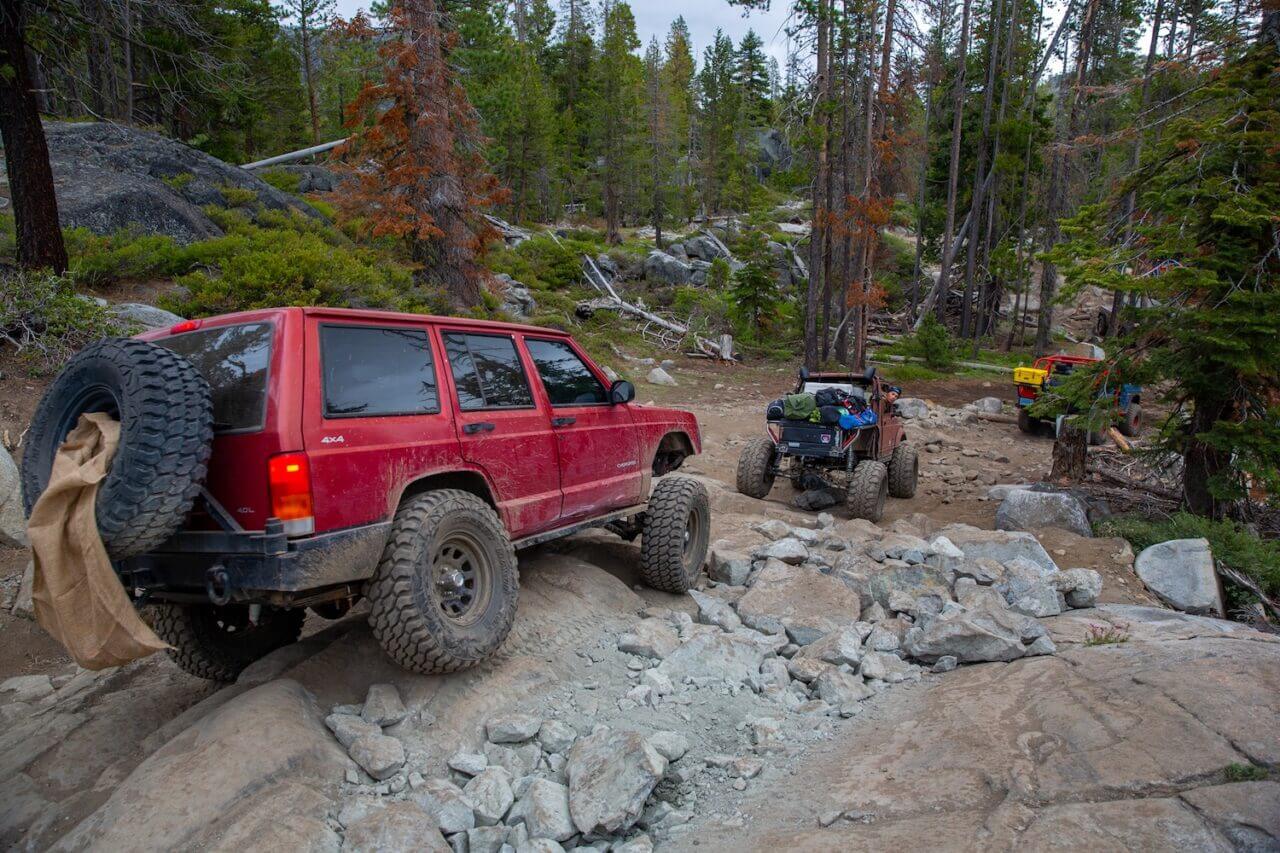
You might really want to run the Rubicon in your Jeep Compass, but we don’t recommend it for several reasons. Conversely, getting bored on the Rubicon in your rock buggy and deciding to drive off the trail to scale obstacles is just as harmful. The goal is to leave the trail in the same condition that you found it in. Not stacked with rocks but also not dug out with holes either.
Tread Lightly
One of the most important off-roading trail etiquette rules to follow is to stay on established trails. Staying on marked trails isn’t just crucial for your own safety; it is also important for preserving the land. Off-roading is all about enjoying nature, not destroying it. Drive over, not around obstacles to avoid widening the trail. When possible, avoid mud. In soft terrain, go easy on the gas to avoid wheel spin, which can cause rutting. Straddle ruts, gullies and washouts even if they are wider than your vehicle. There is nothing wrong with being winched through an obstacle if you can’t make it through on your own after a reasonable number of attempts. Consider it a way to justify the purchase of the winch!

If you meet another vehicle going uphill while you’re going downhill, the accepted protocol is for you to back up or pull over and give the uphill vehicle the right of way. When going uphill, vehicles often need some momentum to climb. By forcing the uphill vehicle to stop and let you pass by, they may lose that momentum and need to roll backward down the hill. From a more practical perspective, we often ask the group with the least amount of vehicles to pull off since they need to find less places to pass.
Pack It Out
There are no dumpsters in the backcountry. You need to plan to pack out anything you pack in with you. This includes policing your brass if you plan to do some shooting and the area allows it. Carry a trash bag on your vehicle and pick up litter left by others. While littering of any kind goes against off-roading trail etiquette, you should especially avoid tossing cigarette butts out the window. While they may seem small and insignificant, cigarette butts are one of the leading causes of wildfires and can cause massive amounts of damage.
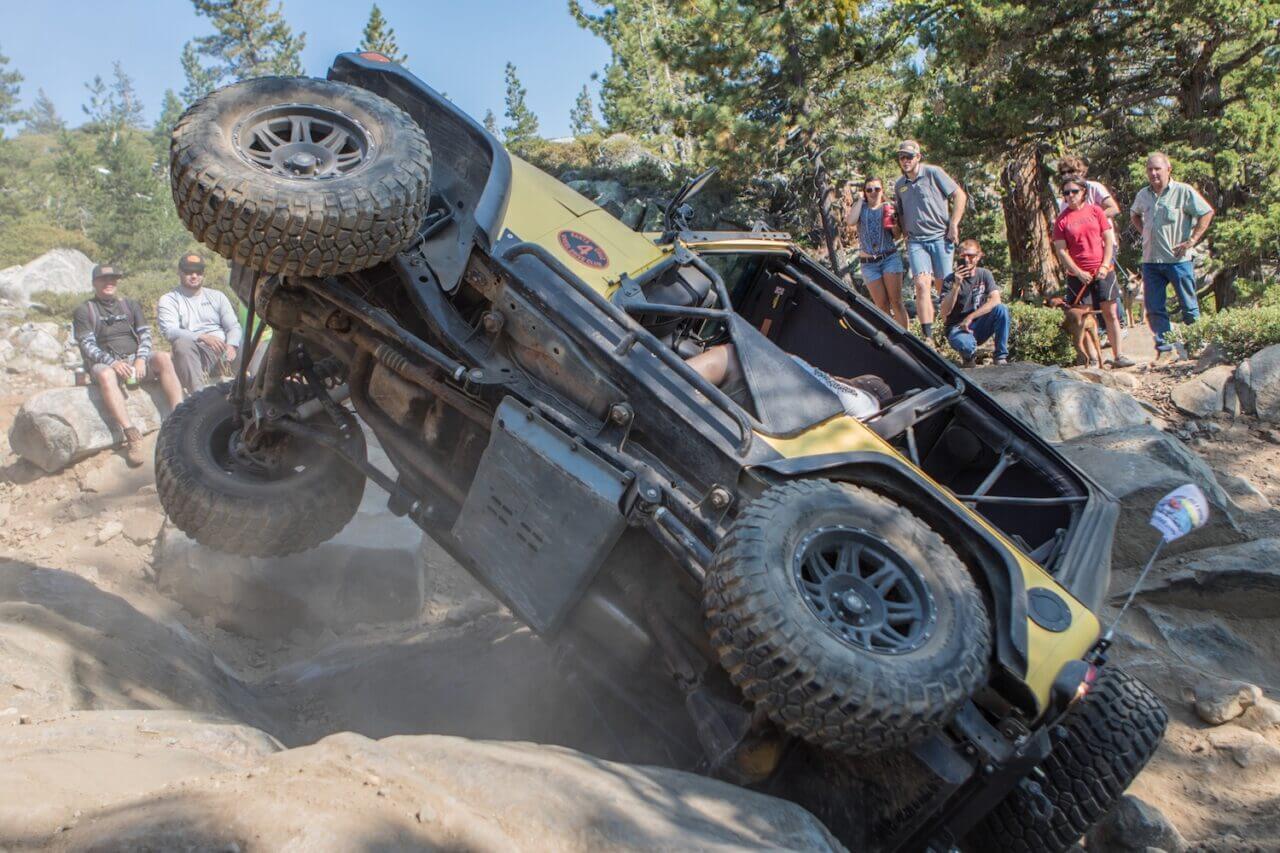
When off-roading, avoid getting too close to the other vehicles around you, instead leaving room to survey the terrain. When tackling tough or steep obstacles, give the vehicle in front of you even more room. You don’t want to get caught right behind a vehicle if it loses traction or rolls over. At the same time, keep the vehicle behind you in the rearview mirror to ensure that they are not left behind.
Be a Role Model for Others
If you see someone acting improperly on the trail, it isn’t uncommon to let your frustration get the best of you and start yelling at the person. This isn’t the best way to influence their behavior though. A better approach is to explain to the person how their actions could give off-roaders a bad reputation and potentially get trails closed down. Drive slowly through camps and keep your music at a low level on the trail, not everyone else might share your affinity for Slipknot. When encountering horses, mountain bikes, or hikers on the trail, move to the side of the trail, stop, turn off your engine. You may even want to offer them water if it is a hot day.
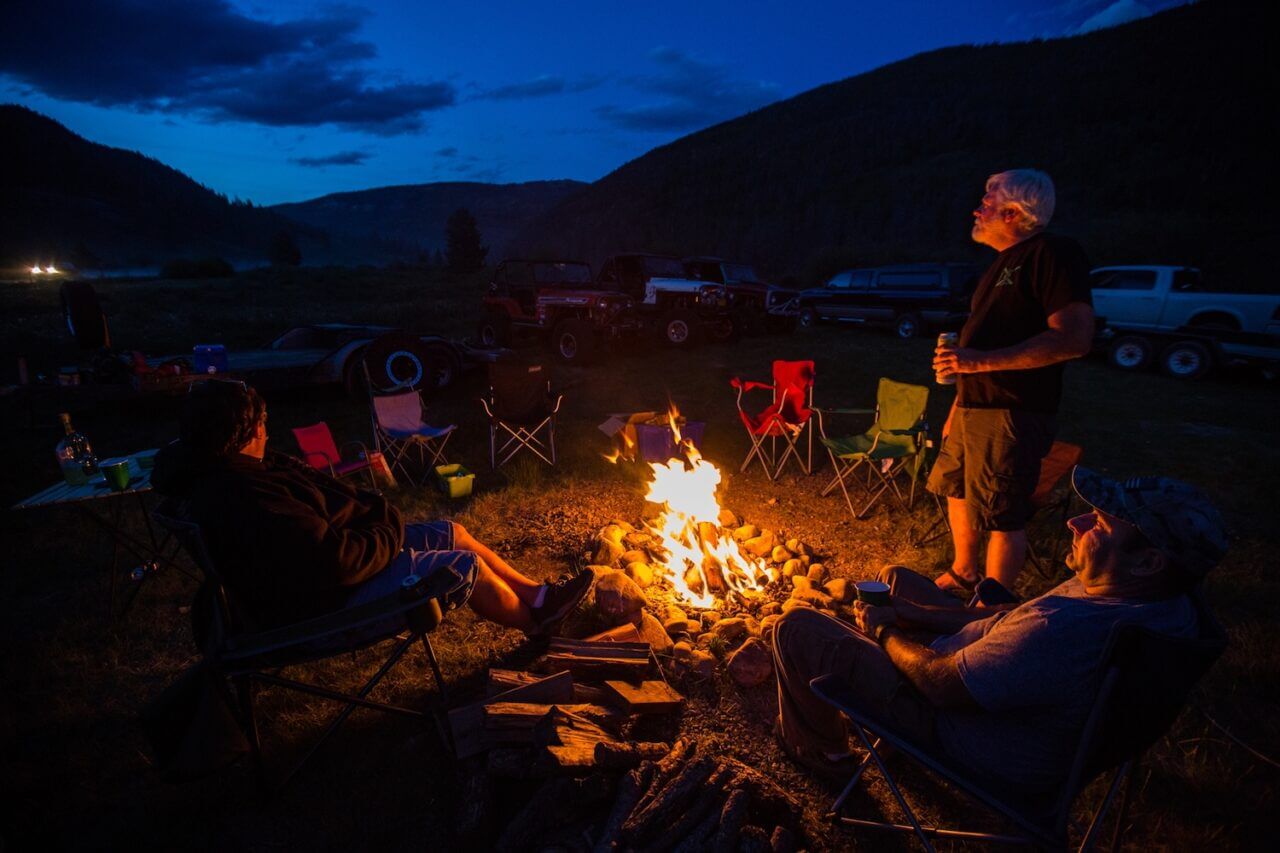
Save the adult beverages for around the campfire at the end of the day, not on the trail. Drinking and driving isn’t just illegal on paved roads, but most dirt roads and trails as well. Furthermore, drinking impairs your reflexes and reaction time, and those are skills you definitely need for technical four-wheeling.
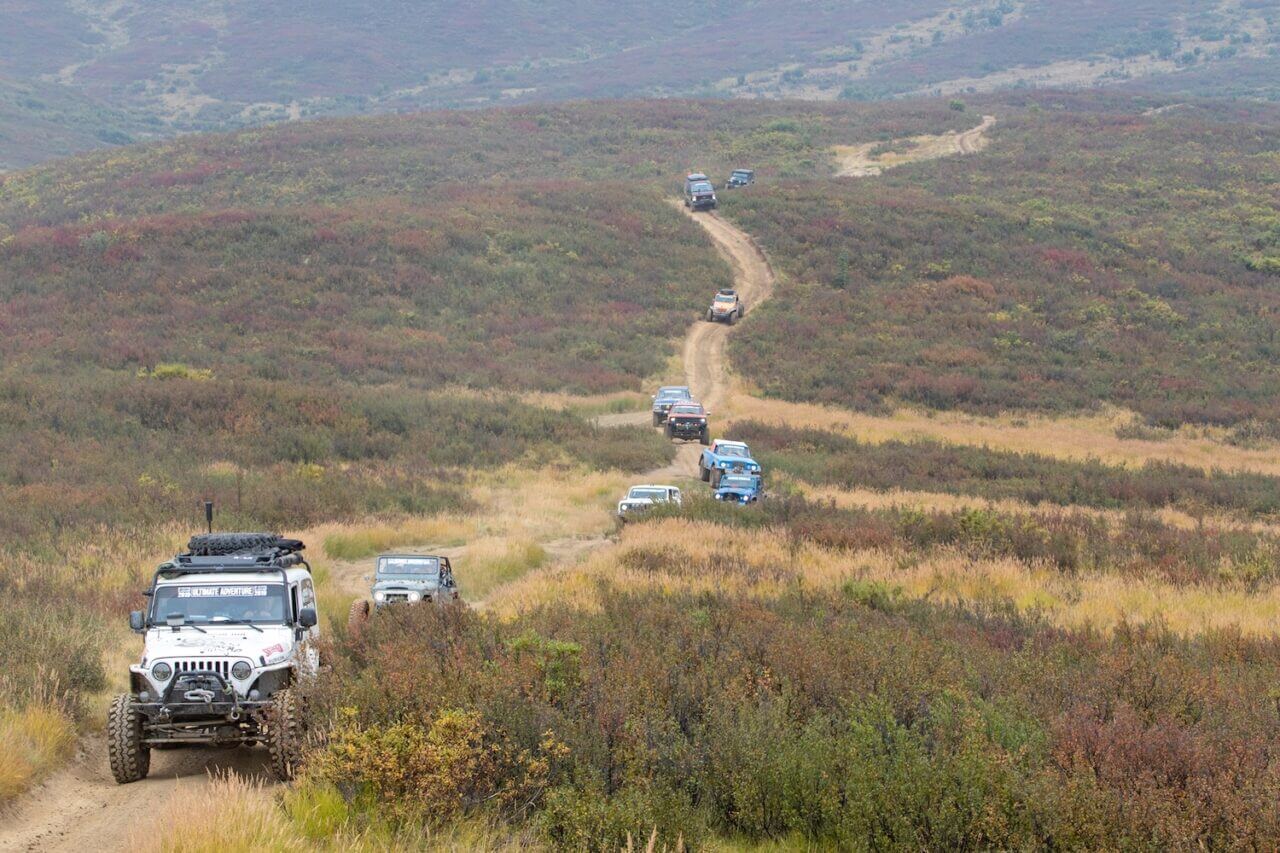
If you are traveling at a slower rate of speed than those behind you and get caught on the trail, find a place to move off to the side and let them pass. If you are the one traveling at a higher rate of speed and catch others on the trail, be patient and respectful and let them find a place to pull off. If they do not do so, sometimes it is necessary to let them know that you are there and want to stay out of their way.











2